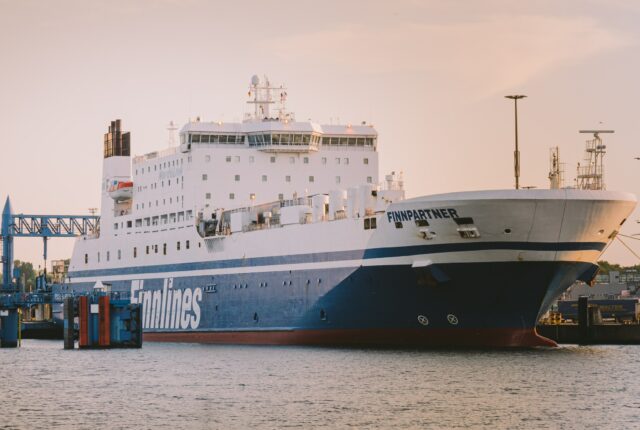
The Surge in Sea Shipping Rates Peaks
Retailers and manufacturers should save on lower import costs this summer as rates to the U.S. West Coast start to fall
American importers are getting a rare piece of good news amid worries about tariffs and consumer spending as ocean shipping costs start to sink.
The average spot rate to ship a 40-foot container from Asia to the U.S. West Coast slipped at the start of this week to $5,840, down from an average of about $6,000 the prior week, according to online booking platform Freightos. A measure of global ocean shipping rates, the Shanghai Containerized Freight Index, on Friday fell 6.8% from a week earlier, dragged down by an almost 27% decline in rates from Shanghai to the U.S. West Coast, according to HSBC Global Research.
The falling prices are a welcome turnaround for retailers and manufacturers who faced rapidly rising rates starting in mid-May after the U.S. reduced tariffs on imports from China for 90 days, to 30% from 145%, leading to a surge in demand. Shipping specialists expect rates from Asia to the U.S. East Coast to start falling in the coming weeks.
The price declines are a sign that ocean carriers’ attempts to increase shipping rates in mid-June are falling flat. “It seems that carriers have overshot or overestimated how strong demand would be,” said Freightos’s head of research Judah Levine.
U.S. retailers and manufacturers have been squeezed this year by added tariff costs and rising shipping rates sparked by a scramble for space on containerships. Carriers pulled ships off services between China and the U.S. in April when demand plummeted after the U.S. imposed the 145% tariffs.
The spot rate to ship a container from China to the U.S. West Coast more than doubled between mid-May and early June, even as carriers added back containerships to trans-Pacific services, according to Freightos.
Importers have been rushing to beat a July 9 deadline when the Trump administration plans to raise tariffs on major trading partners such as Indonesia and Vietnam. Some importers are also rushing to get ahead of a mid-August deadline, when the U.S. is threatening to impose higher tariffs on China.
The tariff-induced import rush coincides with the start of the peak shipping season when retailers bring in back-to-school and end-of-year holiday goods.
Nathan Strang, director of ocean freight at San Francisco-based forwarder Flexport, said only a few weeks ago he was fielding panicked calls from importers looking for space on ships. Now, he said he is fielding calls from importers seeking the lowest rate as prices come “down pretty aggressively as this initial tariff-related peak is over.”
The National Retail Federation forecasts that U.S. imports will peak earlier than usual this year, in July.
The NRF’s Global Port Tracker expects U.S. seaports in July will handle 2.13 million import containers, measured in 20-foot equivalent units, down 8.1% from July of last year. The group forecasts August imports at 1.98 million boxes and expects imports to drop sharply in September and through the rest of the year.
Strang said some of his customers front-loaded orders ahead of tariffs and are taking a cautious approach to new orders in case consumer spending is weaker in the second half of 2025. “No one wants to be holding millions of dollars of inventory in warehouses for six months if they don’t have to,” he said.
Source: Article






